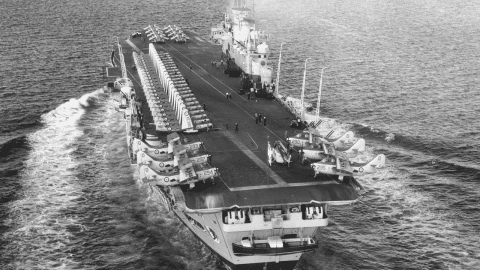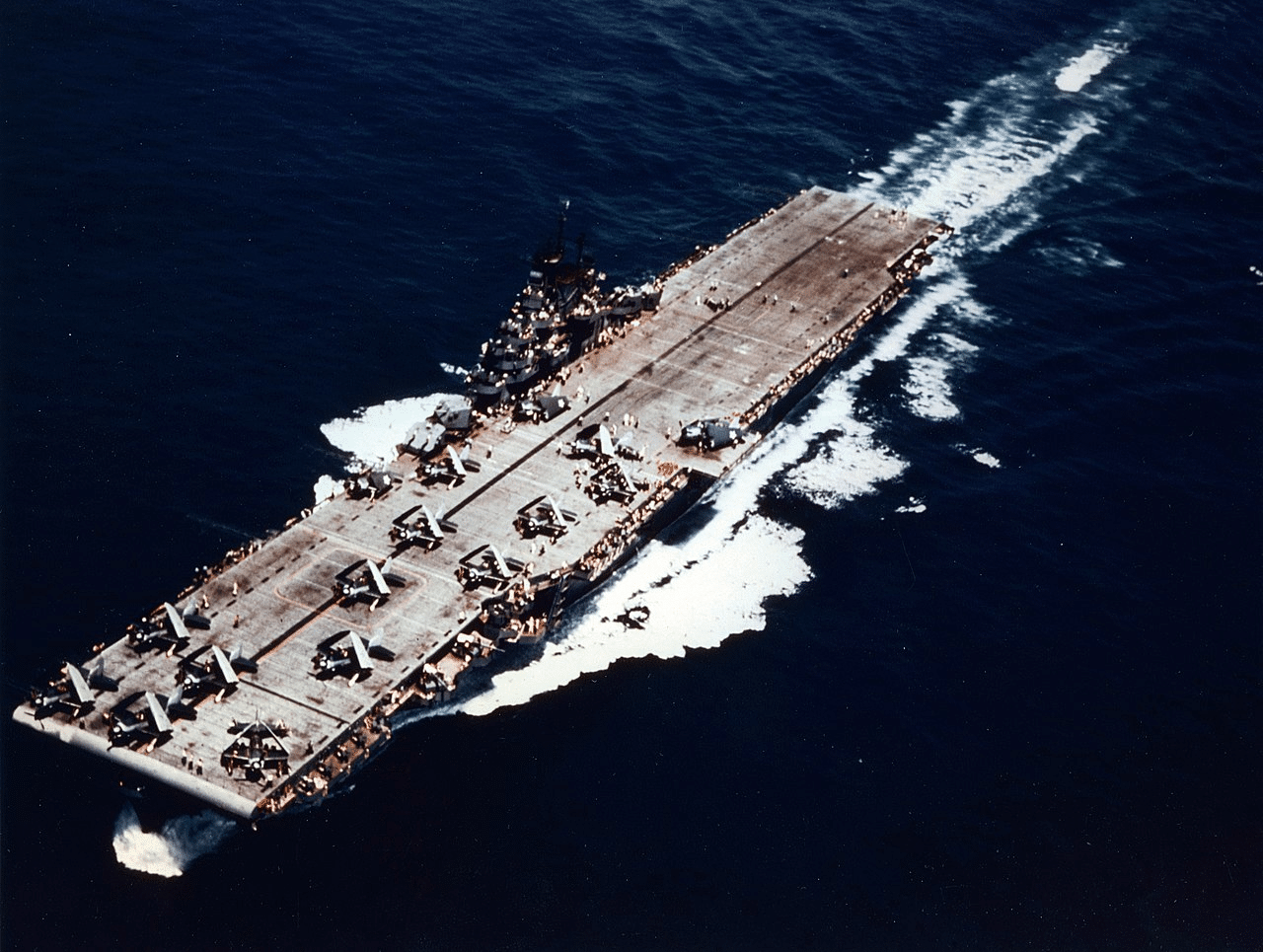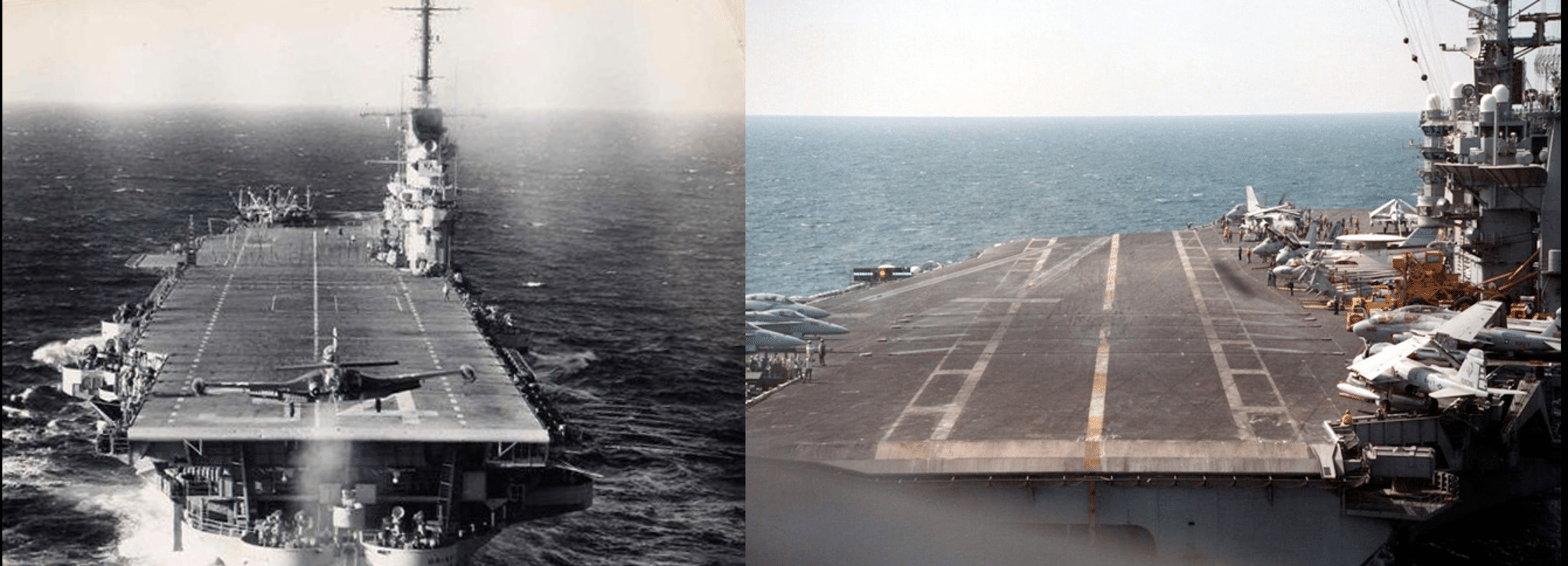
YouTube / VEXR
Today’s Aircraft carriers usually have angled decks, but this wasn’t the norm back then. So why the change?
It turns out that landing a damaged aircraft is already dangerous on land. Add the fact that these planes operate in the middle of the sea, and you get chaos and destruction.
A pilot trying to land on a straight-decked carrier with a damaged plane can potentially hit other parked aircraft, crew, or equipment on the deck.

However, this wouldn’t be a problem anymore if they used an angled flight deck. Pioneered by the British in the 1950s, this revolutionary design made the runway diagonal to the ship’s orientation.
In doing so, the carrier would have enough deck space for a plane to land without any threats or distractions. If the aircraft failed to land, it could just take off again and give it a second go.

Aside from this reason, angled decks also allow for simultaneous takeoffs and landings since the landing strip and launching strip form two separate paths due to their angle. Isn’t that neat?